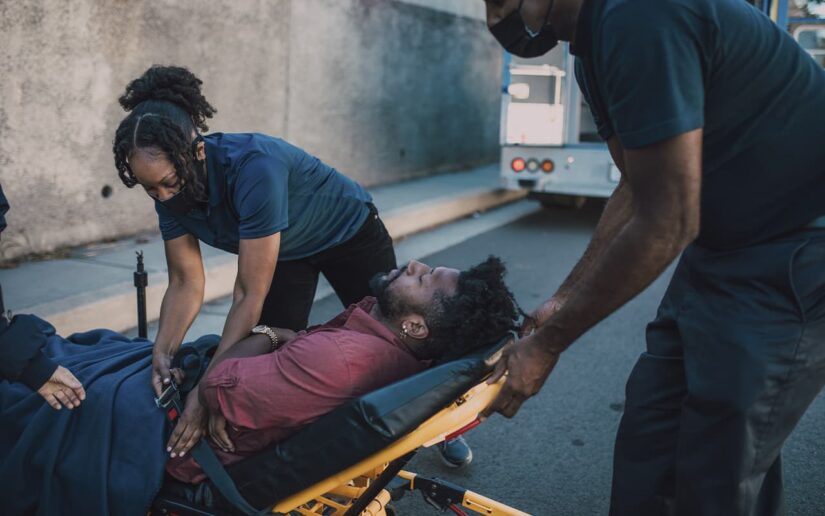First Aid for Stroke and Heart Attack
Stroke is a disease that develops because an artery leading to the brain is ruptured or blocked by a blood clot. During a stroke, oxygen and nutrients are not supplied to the brain, resulting in rapid cell death. Stroke symptoms:
- Inarticulate or distorted speech;
- failure to understand other people’s speech;
- paralysis or numbness of the face, upper and lower extremities;
- blurred or double vision;
- sudden severe headache (may be accompanied by dizziness, vomiting, and loss of consciousness)
- problems with walking (lack of coordination).
If stroke is suspected, ask the person to smile, raise both hands up, or repeat a simple sentence. If the person is unable to do these things, an ambulance should be called immediately.
If there is weakness in the lower extremities, the person should not be moved. When a person has a stroke, they should not be allowed to eat or drink. First Aid for Stroke:
Help the person get into a lying position on his or her side. The head should be elevated (in case of vomiting it will help avoid respiratory problems due to swallowing vomit).
Cover the person with a blanket or plaid.
Watch for changes in the patient’s condition (data should be reported to emergency doctors).
If the person is unconscious, breathing should be checked. If there is no sign of breathing, you should loosen the scarf or tie and begin cardiopulmonary resuscitation.
A heart attack (heart attack) is an emergency condition in which blood flow to the heart is blocked due to a buildup of fat and cholesterol in the arteries. A heart attack can be recognized by a squeezing sensation and pain in the center or left side of the chest and arms, which may spread to the neck, jaw, and back. Other signs of a heart attack are:
- Sudden dizziness and loss of consciousness;
- a feeling of weakness, the appearance of cold sweats;
- shortness of breath and difficulty breathing.
Non-specific symptoms of a heart attack may include heartburn, nausea and abdominal pain. If these signs are present, it is necessary to call an ambulance and begin first aid for a heart attack.
If a heart attack is suspected, the person should be asked to sit down and unbutton outer clothing. You should also inquire about medications that may have been prescribed by a cardiologist and help the patient take them. First aid for a heart attack to a person who is unconscious consists of cardiopulmonary resuscitation.
First aid for shortness of breath is to remove the outer clothing and help in taking a comfortable position. It is necessary to monitor the condition of the victim until the arrival of the ambulance.
